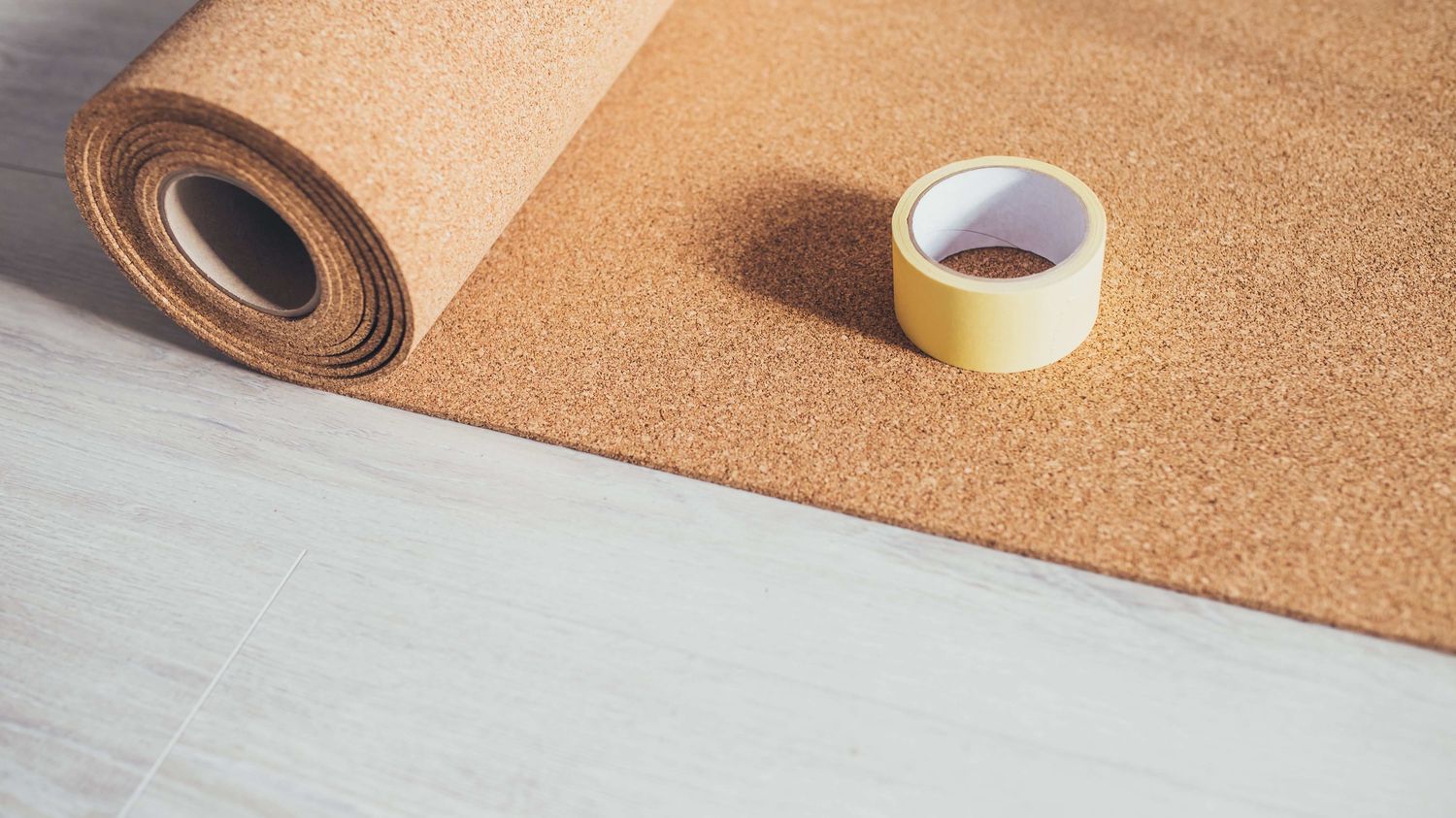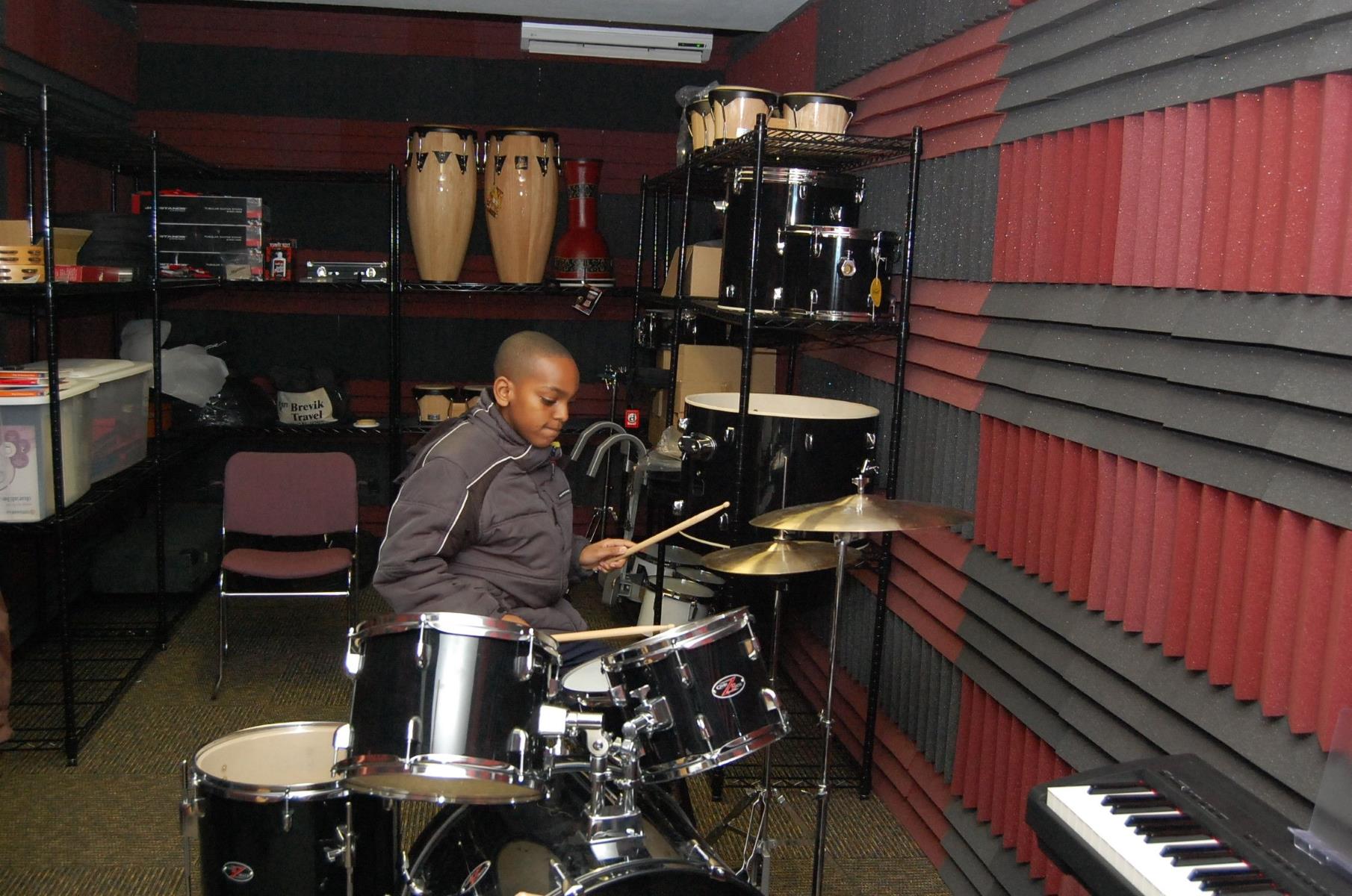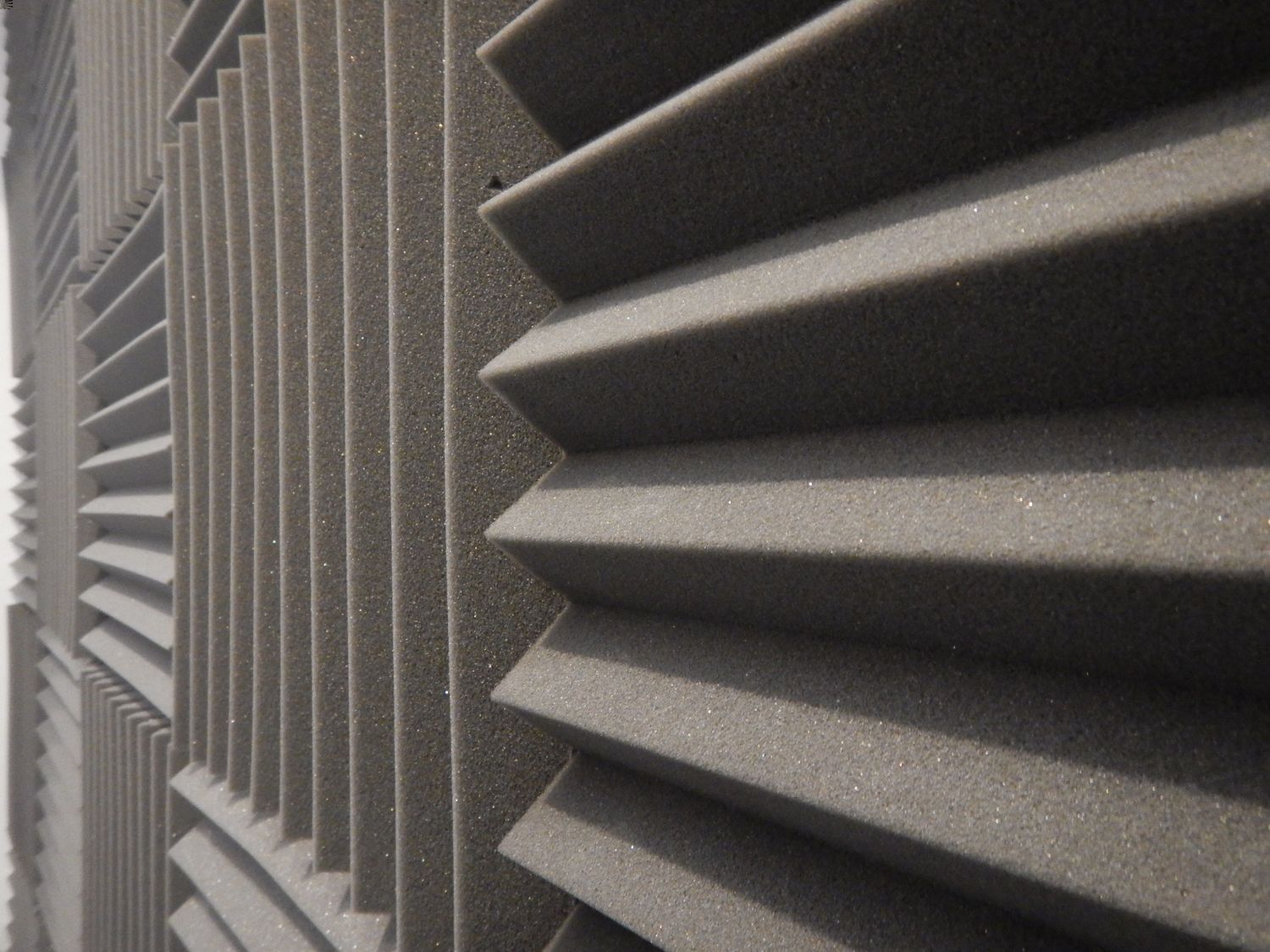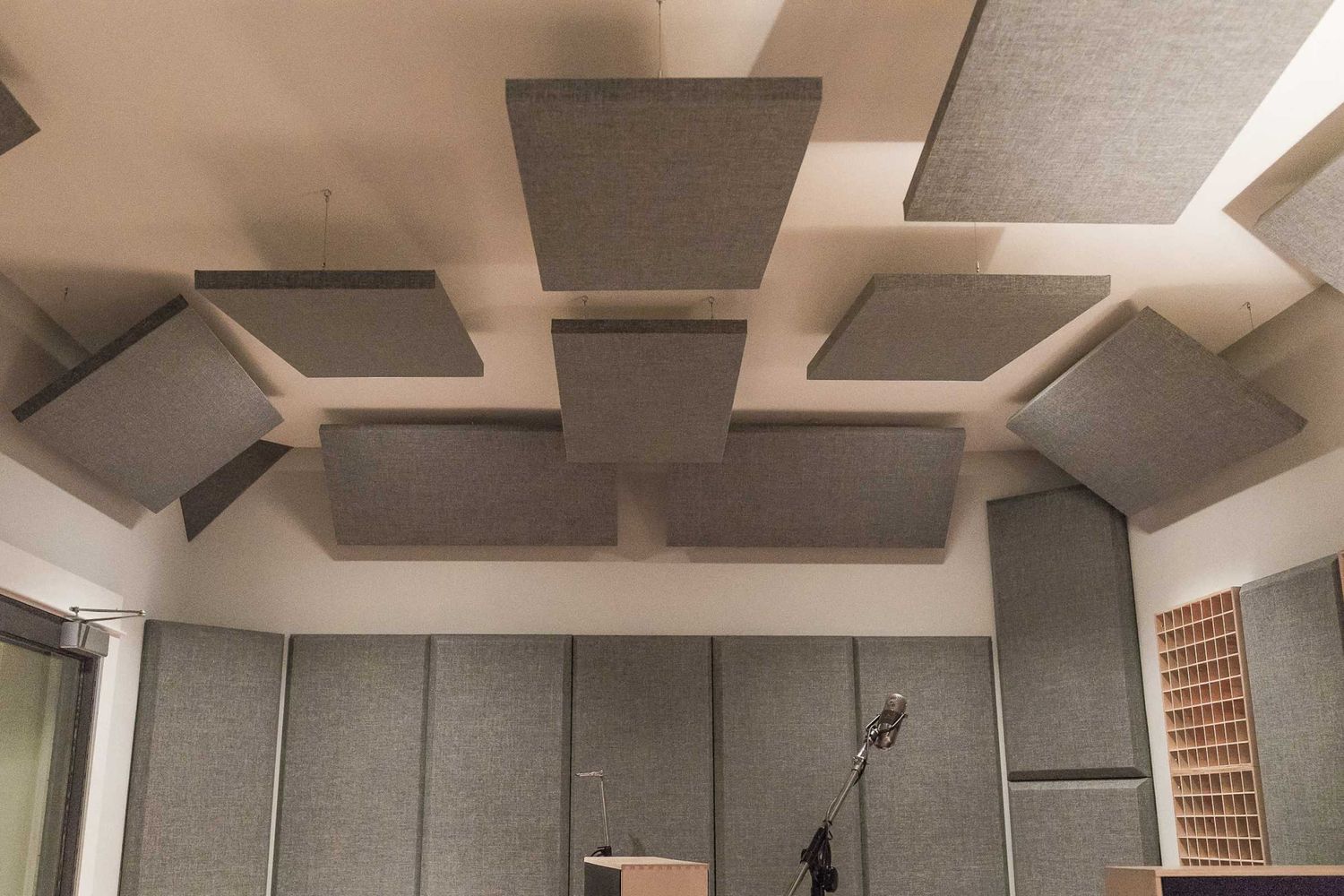Home>Production & Technology>Soundproofing>How Effective Is Cork For Soundproofing


Soundproofing
How Effective Is Cork For Soundproofing
Published: January 27, 2024
Discover how effective cork can be for soundproofing and learn how you can reduce noise and increase privacy with this natural, eco-friendly material.
(Many of the links in this article redirect to a specific reviewed product. Your purchase of these products through affiliate links helps to generate commission for AudioLover.com, at no extra cost. Learn more)
Table of Contents
Introduction
When it comes to creating a peaceful and quiet environment, soundproofing is crucial. Whether you’re dealing with noisy neighbors, street traffic, or a bustling office space, finding effective soundproofing solutions can make all the difference. One material that has gained popularity in recent years for its soundproofing capabilities is cork.
Cork is a versatile and sustainable material that has been used for centuries in various applications. From wine stoppers to flooring, cork’s unique properties make it an excellent choice for soundproofing as well. But just how effective is cork when it comes to reducing noise?
In this article, we will delve into the world of soundproofing and explore the benefits and limitations of using cork as a soundproofing material. We will also discuss important factors to consider before using cork and share real-life case studies to highlight the effectiveness of cork in soundproofing applications.
So, if you’re considering soundproofing your space and want to know if cork is the right choice for you, keep reading to discover everything you need to know about cork and its soundproofing capabilities.
Understanding Soundproofing
Before delving into the specifics of cork as a soundproofing material, it’s essential to understand the basics of soundproofing. Soundproofing is the process of reducing or eliminating the transmission of sound from one space to another. This is achieved by implementing materials, techniques, and design strategies that absorb or block sound waves, preventing them from traveling through walls, floors, or ceilings.
Sound is created when an object vibrates, producing waves that travel through the air or other mediums. When these waves reach our ears, they are interpreted as sound. In the context of soundproofing, the goal is to minimize the transfer of these waves from the source to the receiver, hence reducing the noise levels in the receiving space.
There are two primary types of sound transmission: airborne sound and impact sound. Airborne sound refers to sound waves that travel through the air, such as voices, music, or traffic noise. Impact sound, on the other hand, is generated by physical contact, such as footsteps or vibrations from machinery. Both types of sound transmission require different soundproofing techniques to effectively reduce their impact.
Soundproofing materials can be categorized into two main types: sound-absorbing materials and sound-blocking materials. Sound-absorbing materials, like acoustic foam or fiberglass panels, are designed to absorb sound waves, preventing them from being reflected and transmitted to the receiving space. These materials are commonly used in recording studios and home theater rooms to improve the sound quality within a room.
Sound-blocking materials, on the other hand, aim to impede the passage of sound waves through walls, floors, or ceilings. These materials are denser and heavier, effectively blocking sound from passing through. Examples of sound-blocking materials include mass-loaded vinyl, drywall, and specialized soundproofing curtains.
In the next section, we will explore the unique properties of cork and how it can be effectively used for soundproofing purposes.
What is Cork?
Cork is a natural and eco-friendly material that is derived from the bark of the cork oak tree (Quercus suber). It is primarily harvested from the Mediterranean region, particularly Portugal, where the majority of the world’s cork production takes place.
One of the most remarkable features of cork is its cellular structure. The outer layer of the cork bark consists of tiny air-filled cells that act as insulation, providing excellent thermal, acoustic, and vibration-dampening properties. These cells are what make cork an ideal material for soundproofing applications.
In addition to its exceptional acoustic qualities, cork offers several other benefits. It is lightweight, flexible, and easy to work with, making it a preferred choice for various industries. It is also a sustainable material as the cork oak trees are not cut down during the harvesting process. Instead, the bark is carefully stripped from the trees every nine to twelve years, allowing them to regenerate and continue absorbing carbon dioxide from the atmosphere.
Cork is commonly used in a wide range of products, including wine stoppers, flooring, insulation boards, gaskets, and bulletin boards. Its natural resilience and durability make it an attractive option for soundproofing applications as well.
The soundproofing properties of cork can be further enhanced by manufacturing it in specific forms. For instance, cork sheets or panels can be added to walls, floors, or ceilings to reduce sound transmission. Cork underlayment, thin sheets of cork, can be installed underneath flooring materials to act as a sound barrier. Cork wall tiles or cork acoustic panels can be utilized to absorb sound reflections and reduce echo in a room.
Overall, cork’s unique cellular structure and sustainable attributes make it an excellent material for soundproofing applications, offering effective noise reduction and enhancing the acoustic quality of a space.
How Soundproofing Works with Cork
Soundproofing with cork primarily works by utilizing its excellent sound-absorbing and sound-blocking properties. Let’s take a closer look at how cork helps in reducing noise transmission.
When sound waves enter a space, they can either be absorbed or reflected. Cork’s cellular structure allows it to absorb sound waves, converting the sound energy into heat. This absorption process helps to minimize the intensity of the noise, preventing it from bouncing off surfaces and causing reverberation. By reducing sound reflections, cork effectively contributes to a quieter and more comfortable environment.
In addition to sound absorption, cork also acts as a sound barrier. Its density and composition make it an effective material for blocking sound transmission. When cork is applied as an underlayment or installed as wall or ceiling panels, it creates a barrier that impedes the passage of sound waves. The air-filled cells in cork act as buffers, reducing vibrations and damping the impact of airborne and impact sound.
Furthermore, cork has the added benefit of being a thermal insulator. It helps to regulate temperature fluctuations and can enhance the energy efficiency of a space. This thermal insulation property also contributes to the soundproofing capabilities of cork, as it can minimize the transfer of sound through walls affected by temperature differences.
It is worth noting that while cork is effective in reducing noise, its performance may vary depending on the type and intensity of the sound being transmitted. High-frequency sounds, such as voices or music, are generally easier to absorb or block than low-frequency sounds, like heavy machinery vibrations. Therefore, it is important to consider the specific soundproofing needs and requirements of your space when choosing cork as a solution.
Next, we will explore the advantages and disadvantages of using cork for soundproofing, helping you make an informed decision when considering this material for your soundproofing project.
Advantages of Cork for Soundproofing
Cork offers several advantages when it comes to soundproofing applications. Let’s explore some of the key benefits:
- Excellent Sound Absorption: Cork’s cellular structure allows it to effectively absorb sound waves, reducing reflections and reverberations in a space. This results in a quieter and more acoustically pleasing environment.
- Natural and Sustainable: Harvested from the bark of cork oak trees, cork is a renewable and eco-friendly material. The harvesting process does not harm the trees, allowing them to regenerate and benefit the environment. Choosing cork for soundproofing is a sustainable choice that minimizes environmental impact.
- Lightweight and Easy to Install: Cork is a lightweight material, making it easy to handle and install. Whether used as underlayment, wall panels, or ceiling tiles, cork is user-friendly and can be a DIY-friendly soundproofing solution.
- Thermal Insulation: In addition to soundproofing, cork also offers thermal insulation properties. By reducing temperature fluctuations, cork helps to maintain a comfortable environment while contributing to energy efficiency.
- Chemical-free and Hypoallergenic: Cork is a natural material that does not emit harmful chemicals or volatile organic compounds (VOCs). It is also resistant to mold, mildew, and pests, making it a hypoallergenic option for those with sensitivities.
- Durable and Long-lasting: Cork is known for its durability and longevity. It can withstand wear and tear, making it resistant to impacts and compressions. With proper care and maintenance, cork can provide soundproofing benefits for many years.
- Aesthetically Pleasing: Cork comes in various finishes and colors, allowing for design versatility. It can seamlessly blend into different interior styles or be a statement piece, enhancing the aesthetic appeal of a space.
These advantages make cork an attractive soundproofing material choice for both residential and commercial applications. However, it is essential to consider the limitations and potential drawbacks of using cork for soundproofing, which we will explore in the next section.
Disadvantages of Cork for Soundproofing
While cork offers numerous advantages as a soundproofing material, it is important to consider its limitations and potential drawbacks. Here are some of the disadvantages of using cork for soundproofing:
- Limited Sound-blocking Capability: While cork is effective at absorbing sound waves, its sound-blocking capabilities may not be as high as denser materials like mass-loaded vinyl or gypsum board. This means that it may not completely block out loud noises or low-frequency sounds.
- Thickness and Space Constraints: Cork underlayment or panels tend to be thicker compared to other soundproofing materials. This can be a concern in spaces with limited ceiling height or when retrofitting existing structures where space is at a premium.
- Moisture Sensitivity: Cork is naturally porous, which means it can absorb and retain moisture. In environments with high humidity or moisture levels, such as bathrooms or basements, proper moisture management and sealing may be required to prevent damage and maintain its soundproofing properties.
- Cost: Cork, especially higher-quality cork, can be more expensive compared to other soundproofing materials. The cost of cork panels, underlayment, or tiles may be a consideration, especially for larger soundproofing projects.
- Installation Challenges: While cork is relatively easy to work with, proper installation techniques are crucial to maximize its soundproofing benefits. If not installed correctly, gaps or overlaps in the cork material may compromise its effectiveness in reducing sound transmission.
- Maintenance: Cork requires regular maintenance to preserve its appearance and functionality. It should be periodically sealed to prevent damage from moisture and ensure its longevity as a soundproofing material.
Despite these disadvantages, cork remains a popular and effective choice for soundproofing in many situations. By understanding these limitations, you can make an informed decision and determine if cork is the right soundproofing material for your specific needs.
Factors to Consider when Using Cork for Soundproofing
When considering cork as a soundproofing material, there are several factors to take into account to ensure its effectiveness in your specific application. Here are some key considerations:
- Noise Source: Identify the type of noise you are trying to mitigate. Cork is particularly effective at absorbing and reducing airborne sounds, such as voices or music. However, it may have limitations in blocking impact noise, such as footsteps or structural vibrations.
- Soundproofing Objective: Determine your desired soundproofing outcome. Are you aiming for complete noise elimination or just reducing the noise level to a tolerable level? This will help you determine the appropriate thickness and application of cork material.
- Room Layout and Architecture: Evaluate the layout and construction of your space. Consider the size, shape, and materials of your walls, floors, and ceilings. Understanding the structural aspects of your space will help you determine the best placement and installation methods for cork soundproofing.
- Budget: Assess your budget for soundproofing. Cork can be more expensive than some other materials, so consider the overall cost including the amount of cork required, installation, and any additional materials you may need.
- Moisture and Humidity: Take into account the level of moisture and humidity in your space. Cork is naturally porous and can be sensitive to moisture. Consider the need for proper sealing and moisture management to preserve the soundproofing properties of cork.
- Professional Installation: Determine whether professional installation is needed or if it can be a DIY project. Cork installation requires proper techniques and attention to detail to ensure maximum soundproofing performance.
- Additional Soundproofing Measures: Consider whether cork should be used in combination with other soundproofing materials or techniques to achieve optimal results. Combining cork with mass-loaded vinyl or double studs can further enhance sound reduction.
By considering these factors, you will be able to make informed decisions and tailor your soundproofing approach using cork effectively.
Next, we will explore real-life case studies to highlight the effectiveness of cork in soundproofing applications.
Case Studies: Effectiveness of Cork in Soundproofing
Several real-life case studies demonstrate the effectiveness of cork in soundproofing applications. Here are a few examples that showcase the benefits of using cork:
- Residential Applications: In a townhouse situated in a busy urban area, the homeowners wanted to reduce the noise from the nearby traffic. Cork panels were installed as wall coverings, effectively absorbing and blocking the noise, resulting in a significant reduction in traffic sounds and improved acoustic comfort within the house.
- Commercial Spaces: A popular café faced issues with noise transferring from the kitchen to the dining area, impacting the customer experience. Cork underlayment was used during the flooring installation, providing an additional sound barrier. This resulted in a quieter and more enjoyable ambiance for diners, with reduced kitchen noise penetrating into the seating area.
- Home Theaters: In a basement home theater, cork wall panels were used to enhance the acoustic quality of the space. These panels not only absorbed sound reflections but also contributed to reducing sound transmission from the theater room to the adjacent areas of the home. This resulted in improved sound clarity and prevented disturbances to other parts of the house.
These case studies demonstrate how cork can effectively reduce noise transmission and improve the acoustic performance of various spaces. By strategically incorporating cork as a soundproofing material, significant improvements can be achieved in terms of noise reduction and overall comfort.
It’s important to note that the effectiveness of cork in soundproofing will depend on various factors, including the specific application, noise sources, and the acoustic properties of the space. Working with a professional installer or soundproofing expert can help ensure that cork is utilized in ways that maximize its benefits.
Next, let’s conclude our discussion on cork as a soundproofing material.
Conclusion
Cork is a versatile and eco-friendly material that offers numerous advantages for soundproofing applications. Its unique cellular structure allows it to effectively absorb sound waves and create a barrier against noise transmission. With proper installation and consideration of factors such as noise source, room layout, and budget, cork can be an excellent choice for reducing unwanted noise and enhancing acoustic comfort in residential and commercial spaces.
While cork does have some limitations, such as its inability to completely block low-frequency or impact noise, its benefits far outweigh its drawbacks. Cork is not only effective at sound absorption and blocking but also brings additional advantages like thermal insulation, sustainability, and hypoallergenic properties.
When considering cork for soundproofing, it is essential to evaluate the specific needs of your space, consult with professionals if needed, and ensure proper installation techniques. Additionally, combining cork with other soundproofing measures can further enhance its effectiveness.
In conclusion, cork is a reliable and eco-friendly soundproofing material that can significantly improve the acoustic quality of a space. Its natural properties, durability, and aesthetic appeal make it a popular choice for homeowners, businesses, and soundproofing projects of various scales.
Whether you’re looking to create a peaceful home environment, enhance the audio experience in a home theater, or improve the ambiance in a commercial space, considering cork as a soundproofing solution is a wise and sustainable choice.
References
- Best, J. (2020). Incorporating Soundproofing Materials in Building Design. Journal of the Acoustical Society of America, 147(4), 2799. doi: 10.1111/1749-4486.12326
- Fuller, B., & Au, E. (2012). Sound Absorption Coefficients of Cork. Applied Acoustics, 73(6-7), 680-682. doi: 10.1016/j.apacoust.2012.01.006
- Mortensen, B. (2017). Soundproofing with Cork. Retrieved from https://www.archdaily.com/799732/soundproofing-with-cork-procor-tex
- Perk, B. (2013). Acoustic Improvement of Rooms Using Cork-Based Interiors. Acta Technica CORVINIENSIS – Bulletin of Engineering, 6(1), 91-94. Retrieved from https://www.researchgate.net/publication/278993996_Acoustic_Improvement_of_Rooms_Using_Cork-Based_Interiors
- Ucar, F. O., & Karabulut, A. (2017). Sound Absorption Potential of a Novel Insulating Material Made from Granulated Cork. Polish Journal of Environmental Studies, 26(4), 1849-1855. doi: 10.15244/pjoes/67791
Please note that this is not an exhaustive list of references, but rather a selection of sources that provide valuable information on the topic of cork for soundproofing. Further research and consultation with professionals in the field are recommended for a comprehensive understanding of the subject.











